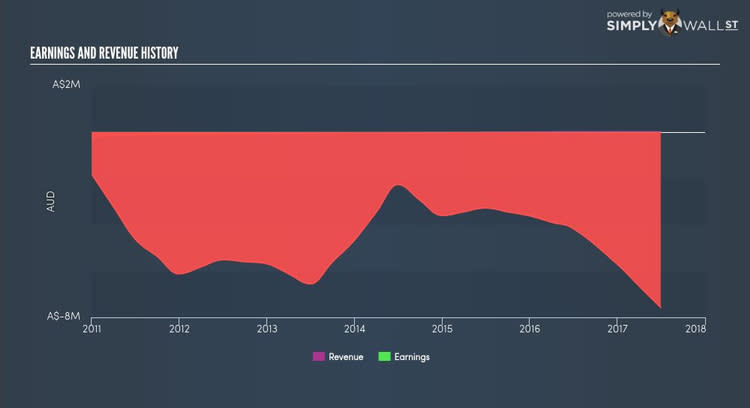Image Resources NL (ASX:IMA): Risks You Need To Consider Before Buying

If you are a shareholder in Image Resources NL’s (ASX:IMA), or are thinking about investing in the company, knowing how it contributes to the risk and reward profile of your portfolio is important. Every stock in the market is exposed to market risk, which arises from macroeconomic factors such as economic growth and geo-political tussles just to name a few. This is measured by its beta. Not all stocks are expose to the same level of market risk, and the market as a whole represents a beta value of one. Any stock with a beta of greater than one is considered more volatile than the market, and those with a beta less than one is generally less volatile.
Check out our latest analysis for Image Resources NL
What does IMA's beta value mean?
Image Resources NL has a beta of 2.55, which means that the percentage change in its stock value will be higher than the entire market in times of booms and busts. A high level of beta means investors face higher risk associated with potential gains and losses driven by market movements. Based on this beta value, IMA can help magnify your portfolio return, especially if it is predominantly made up of low-beta stocks. If the market is going up, a higher exposure to the upside from a high-beta stock can push up your portfolio return.
Does IMA's size and industry impact the expected beta?
IMA, with its market capitalisation of AUD $45.70M, is a small-cap stock, which generally have higher beta than similar companies of larger size. Moreover, IMA’s industry, metals and mining, is considered to be cyclical, which means it is more volatile than the market over the economic cycle. So, investors should expect a larger beta for smaller companies operating in a cyclical industry in contrast with lower beta for larger firms in a more defensive industry. This supports our interpretation of IMA’s beta value discussed above. Fundamental factors can also drive the cyclicality of the stock, which we will take a look at next.
Can IMA's asset-composition point to a higher beta?
During times of economic downturn, low demand may cause companies to readjust production of their goods and services. It is more difficult for companies to lower their cost, if the majority of these costs are generated by fixed assets. Therefore, this is a type of risk which is associated with higher beta. I test IMA’s ratio of fixed assets to total assets in order to determine how high the risk is associated with this type of constraint. With a fixed-assets-to-total-assets ratio of greater than 30%, IMA appears to be a company that invests a large amount of capital in assets that are hard to scale down on short-notice. As a result, this aspect of IMA indicates a higher beta than a similar size company with a lower portion of fixed assets on their balance sheet. Similarly, IMA’s beta value conveys the same message.
What this means for you:
Are you a shareholder? You could benefit from higher returns from IMA during times of economic growth. Its higher fixed cost isn’t a major concern given margins are covered with high consumer demand. However, in times of a downturn, it may be safe to look at a more defensive stock which can cushion the impact of lower demand.
Are you a potential investor? Before you buy IMA, you should factor how your portfolio currently moves with the wider market, and where we are in the economic cycle. This stock could be an outperformer during times of growth, and it may be worth taking a deeper dive into the fundamentals to crystalize your thoughts on IMA.
Beta is one aspect of your portfolio construction to consider when holding or entering into a stock. But it is certainly not the only factor. Take a look at our most recent infographic report on Image Resources NL for a more in-depth analysis of the stock to help you make a well-informed investment decision. But if you are not interested in Image Resources NL anymore, you can use our free platform to see my list of over 50 other stocks with a high growth potential.
To help readers see pass the short term volatility of the financial market, we aim to bring you a long-term focused research analysis purely driven by fundamental data. Note that our analysis does not factor in the latest price sensitive company announcements.
The author is an independent contributor and at the time of publication had no position in the stocks mentioned.

